The great HII region Sh 2-132 is located in the Cep OB1 association within the Perseus arm, at a distance of about 3180 parsecs. It is ionised by two Wolf-Rayet stars (WR 152 and WR 153) and about 11 OB stars. Sh 2-132 has no common name. However, it has always looked like an arched celestial dragon to me, so I think of it as the Dragon nebula.
Last year I mentioned the arrival of the northern hemisphere hydrogen-alpha imaging project IPHAS. IPHAS has released incredibly detailed hydrogen-alpha images of most of the northern galactic plane, radically enhancing our views of many of the Sharpless nebulae. In this blog entry I look at IPHAS's view of Sh 2-132.
Before I get into the details of accessing the IPHAS data, here are some results. Here's an overview of the whole Sh 2-232 region:
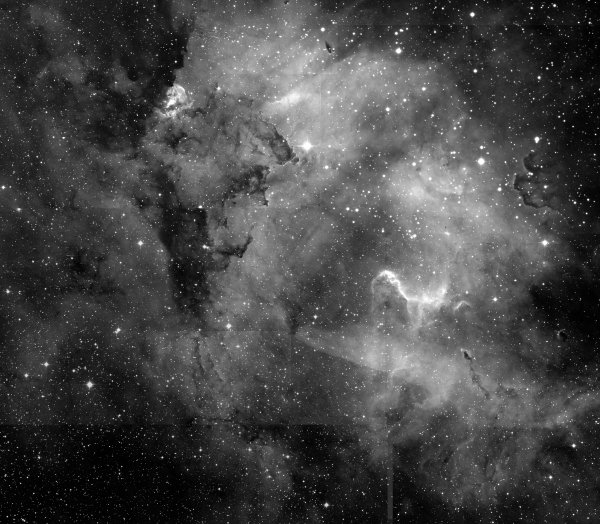
a detail of the Dragon's head:
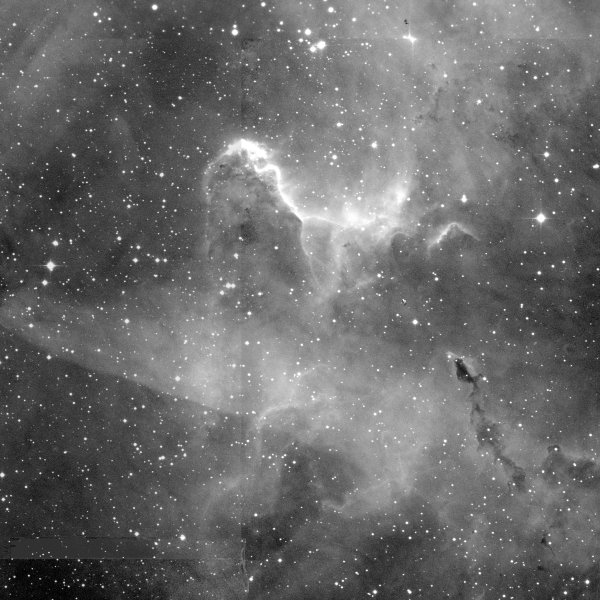
a closeup of the globule to the right of the Dragon's head at full IPHAS resolution:
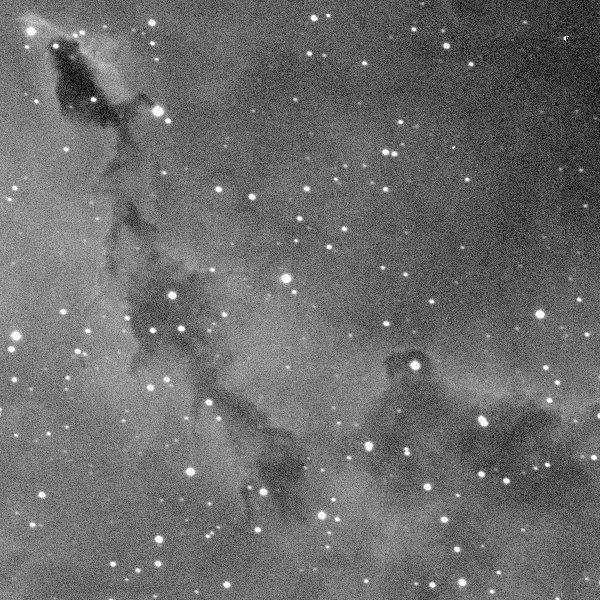
and a detail of the complex region at the northeast:
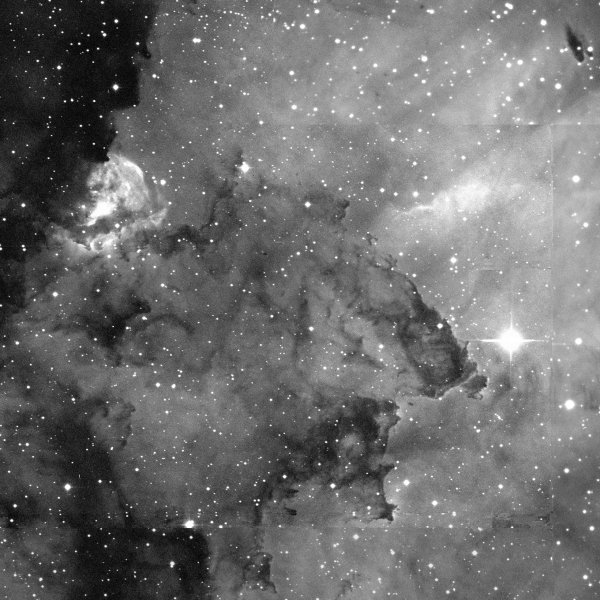
The bright region in this last image towards the upper left is the infrared source and star formation region IRAS 22187+5559. It is unclear whether this is part of Sh 2-132. Wouterloot and Brand give a kinematic distance of 5090 parsecs for IRAS 22187+5559, suggesting that it lies well beyond Sh 2-132, but because of known streaming motions in the Perseus arm, this estimate may very well be too large.
Because IPHAS provides Sloan r and i plates in addition to hydrogen-alpha, it is also possible to create false colour images like this one:
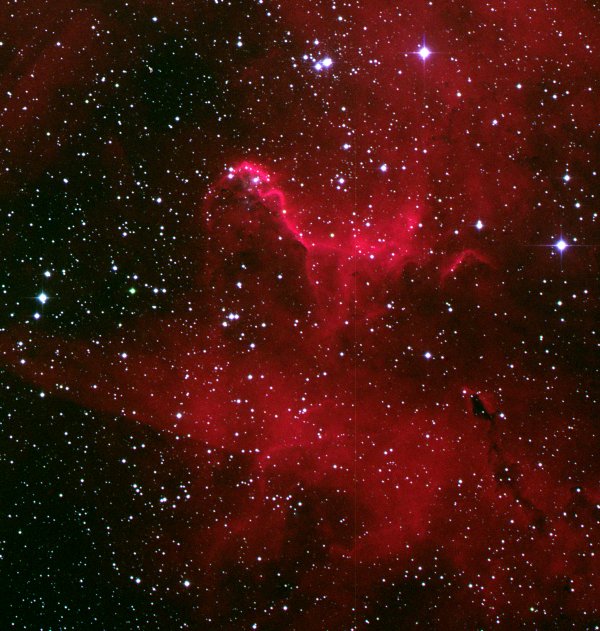
However, I find that this tends to obscure the detail in the hydrogen-alpha data and prefer the black and white images.
Creating your own IPHAS images
For some reason astroimaging sites have been slow to take advantage of the new detailed data available from IPHAS. This is a shame because real astroimagers would be able to create much better images than my limited efforts above!
The recommended option for accessing IPHAS data is Astrogrid, a complex Java application. This application is fantastic for professional astronomers working with many different databases. It's perhaps overkill for simply downloading images, however.
Fortunately, there is now a simpler two step alternative. The first step is the IPHAS postage stamp server here:
http://casu.ast.cam.ac.uk/ag/portal/
(Visit the site and then click on the "Postage Stamps" link at the top.)
Enter the name or coordinates of an object and the postage server will show you small images along with the number of the plate.
IPHAS plates are split into four 2048x4096 pixel images (CCD segments). There are three frequencies available - hydrogen-alpha, Sloan i and Sloan r. The postage stamp server will display the name of the image file in the format:
rXXXXXX.fit[Y]
eg.
r367783.fit[4]
where XXXXXX is the plate number and Y is the CCD segment. It will also tell you the frequency.
You can then retrieve the FITS file for that image using a URL with the format:
http://astrogrid.ast.cam.ac.uk/iphas/siap-atlas/getImage?run=XXXXXX&ccd=Y
I have the desktop version of the Aladin FITS viewer installed, and my browser automatically runs Aladin and displays any downloaded FITS files. I always do a log transform of the data in Aladin, convert it to RGB format and save it as a bmp file for further processing.
I hope that you've found this blog entry interesting and that it encourages you to create your own IPHAS images!
